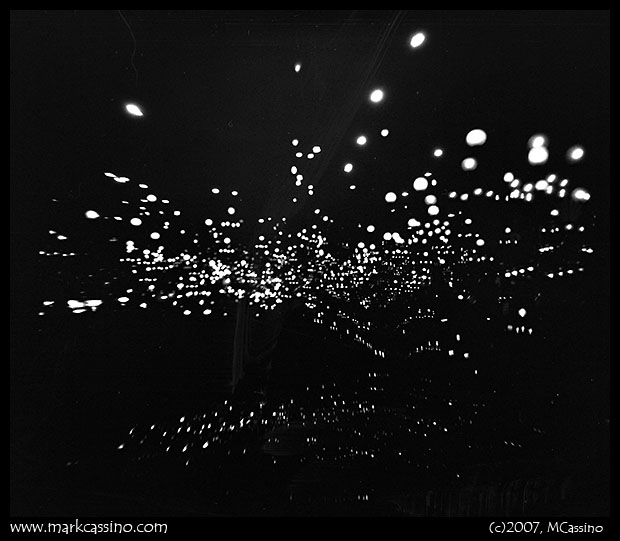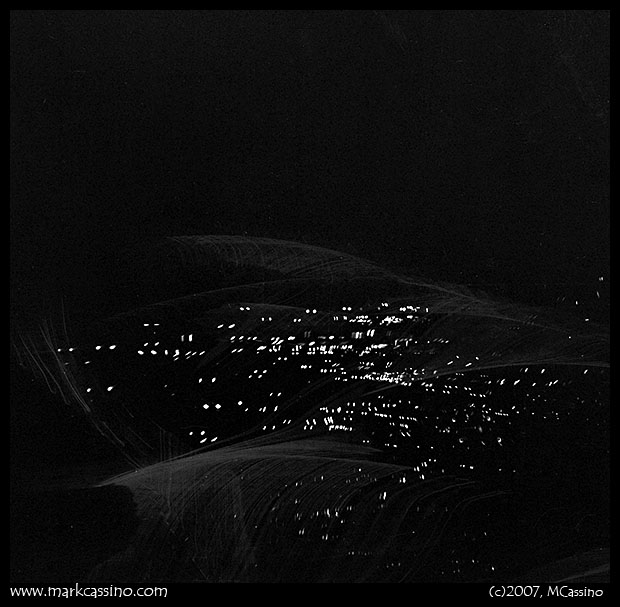Time and Motion Studies #2
A couple of weeks ago I wrote about experiments with multiple exposures with the Holga toy camera. I’ve been continuing with these experiments – “time and motion studies” – with mixed results.
My goal with these shots has been to utilize the Holga’s multiple exposure capacity to create a single image that captures an extended period of time. I’m not interested in putting together a few recognizable images, juxtaposed on top of each other. Rather, I’m interested in putting together lots of exposures (25, 50, maybe 100) with few if any individually discernable images being present. The idea is to build up an image through the successive exposure of the film to varying (and weak) light sources – so that the resulting exposure on the film is not representative of any specific image, but rather is the cumulative effect of many exposures. A “layered exposure.”
Ultimately the photograph is a temporal composition – the combined effects of light and time, as opposed to light and place.
Well – that’s the theory at least. I’ve encountered a few challenges in terms of pulling it off, but the process is still new.
The first challenge is finding the right window of ambient light to work with. Without using a neutral density filter, multiple exposures outside on a sunny day will very quickly block up even the slowest film. As a result, I’ve confined this project to twilight hours – snapping away in the mysterious gloom that separates day from night. (I suppose this project could be taken indoors – the multiple exposures would be much easier to manage in a dimly lit building or interior. But that would be limiting – it would be too tempting (or even unavoidable) to take shots of the same place.)
I tried for a few more shots in this genre last week, and the results are something of a mixed bag. “Rotary”, above, is a series of mad snaps taken while whirling around a rotary, shortly after sunset. The result is interesting, and I like the dynamic, but it really is a composite of several individual shots of streetlights, and not a layered-exposure, since so many areas of the frame are dark.

